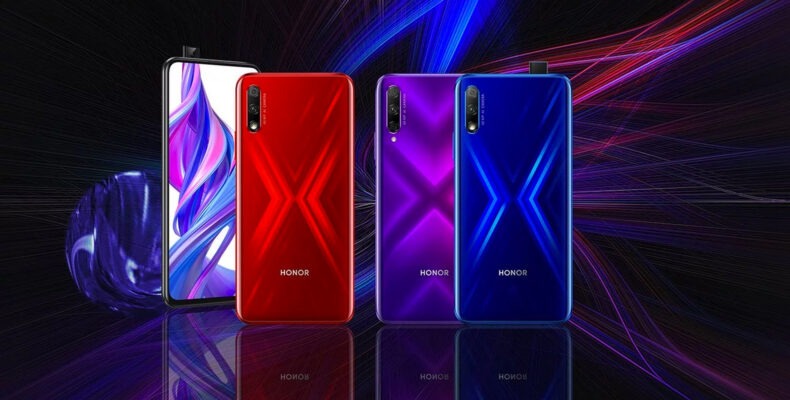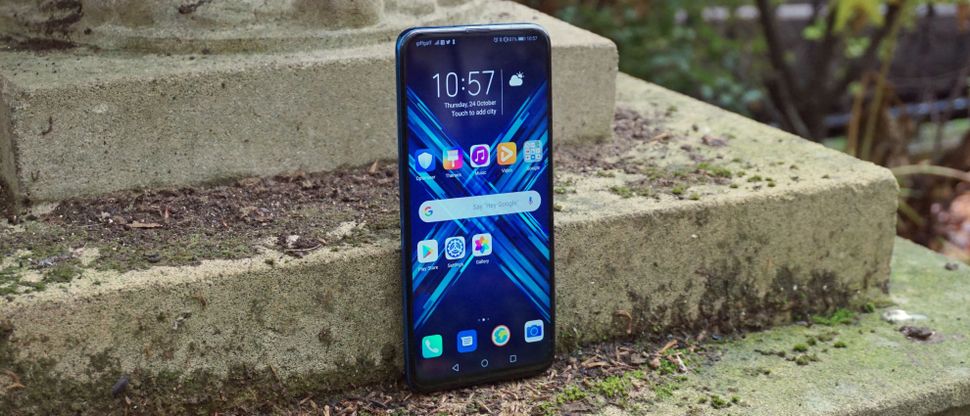
The well-documented Huawei ban debacle in mid-2019 saw the future of Huawei thrown into question, but a relatively forgotten victim of Google’s ban on Huawei using its apps was Honor, the youthful sub-brand of the Chinese company. Future phones from this brand, including its main range as well as the Honor V and Honor X series, will no longer have Google apps.
The last Honor phone to be confirmed to have Google Mobile Services (GMS) is the Honor 9X, from the affordable X range of handsets, a phone which succeeds the Honor 8X. Affordable certainly is the name of the game here, with a modest camera array (well, at least compared to something like the Honor 20), and a middling chipset and screen.
Although the Honor 9X’s designers likely didn’t know it, the phone could be the last from Honor (outside China, where Google apps aren’t used anyway). So is it a decent final offering, and a reason to jump on the Huawei ship before it crashes, or should you turn down this last opportunity?
Price and availability
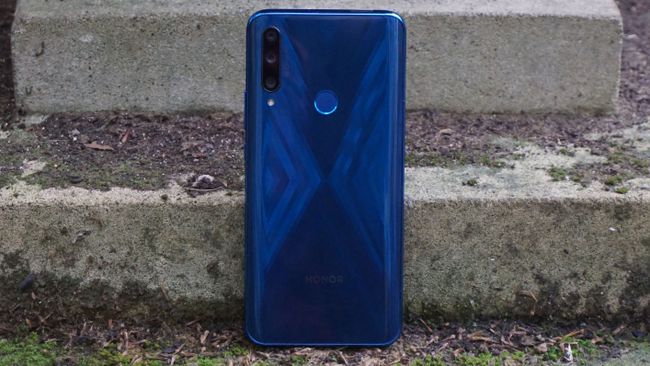
In the UK, and many parts of Europe, you can pick up the Honor 9X now for £249.99 (roughly $320, AU$470). That’s a decent price for a budget phone, although it’s now ineligible for our list of best cheap phones, as the price cap for that is lower.
The Honor 8X could be bought for £229.99 (roughly $310, AU$435) in the UK, although it wasn’t available in many other regions. The Honor 9X then is a little pricer, especially since the 8X has seen price cuts over the course of its existence.
Design and display
For an affordable smartphone, the Honor 9X has a big screen. It’s a 6.6-inch display, which is a little on the large side for a smartphone, so unless you have rather big hands it may be hard for you to properly use the device.
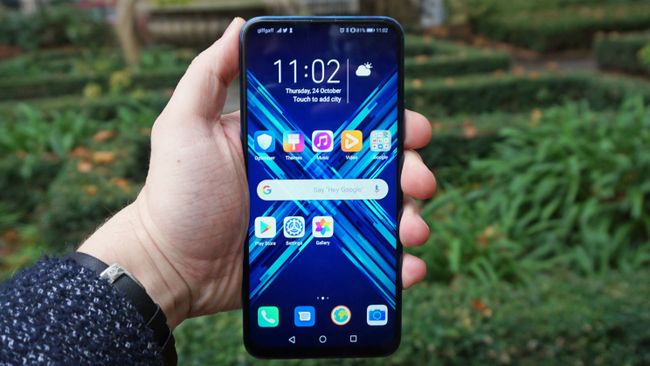
The screen resolution is 1080 x 2340, so it’s a fairly sharp display, but the fact it’s LCD may put some people off. LCD screens are generally considered lower quality than more popular OLED-based displays, as they have relatively poor black reproduction and flatter looking colors. Saying that, the Honor 9X has one of the best-quality LCD screens we’ve seen, with colors that seem to ‘pop’ more than competitors. Max brightness isn’t too high, though.
Thanks to the Honor 9X’s pop-up front-facing camera (which we’ll get to in a second), there’s no notch or ‘punch-hole’ taking up valuable screen space. Sure, there’s a fairly noticeable chin at the bottom of the screen, but generally the 91% screen-to-body ratio is commendable.
The phone has a rather conventional design – it’s quite big, as previously stated, and feels a little heavy too at 197g. It has a Gorilla Glass front, and what feels like a Gorilla Glass back with plastic frame, however Honor hasn’t confirmed its body materials.
There’s a rear-mounted fingerprint sensor quite high on the back of the phone, which we found rather convenient to reach, but this of course depends on hand size, so if you’ve got a smaller hand it may be out of reach. We used a UK release of the Honor 9X, but the device in China had a side-mounted fingerprint sensor, so if you’re importing the device from Asia, you might find it looks a little different.

Just next to the fingerprint sensor is the tri-lens camera array. It’s housed in a bump, but it’s a small bump compared to similar mounts on other phones, and wasn’t as inconvenient as a result.
Back to that front camera – it’s fine, with a square design that’s pretty conventional as pop-ups go. The built-in drop detection system automatically recalls the pop-up camera when the phone is falling, so you’re not at risk of damaging it, but the pop-up takes a little longer than others to fully extend, so it is possible you could damage the camera if you dropped it from a low height.
You’ll find the volume rocker and power button on the right edge of the Honor 9X, and the bottom has a USB-C port. This type of port is industry standard, but some budget phones still use micro USB ports, so the presence of USB-C here is a treat, as it makes charging a lot quicker. There’s also a 3.5mm headphone jack. These are appearing in fewer and fewer phones, so if you still like using wired earphones this is one of the few recent handsets you can pick up that will still have a port for them.
The titular feature here is the rear pattern – when viewed at certain angles, the back of the phone has a 3D gradient ‘X’ pattern, similar to how the Honor View 20 has a ‘V’ pattern on the back. It’s a nice touch, and it makes the Honor 9X look that much more distinct, but the design can easily be concealed by smudges from fingerprints.
Battery life
The Honor 9X has a 4,000mAh battery, which is pretty decent as smartphone batteries go, and you’re never going to have to worry about running out of power halfway through a day with it.
We found that no matter how we used the handset, whether it was just to check Instagram now and then, or for streaming music and playing games, it could last a full day of use with ease. In fact, with light use we could even get through two days without having to power up overnight, though we needed to turn off bluetooth and avoid media playback to get this result.
When we put the Honor 9X through our battery test, which involves playing a 90-minute video at full brightness with Wi-Fi on and accounts syncing in the background, the charge dropped from full to 82%, so a fairly large drop of 18%.
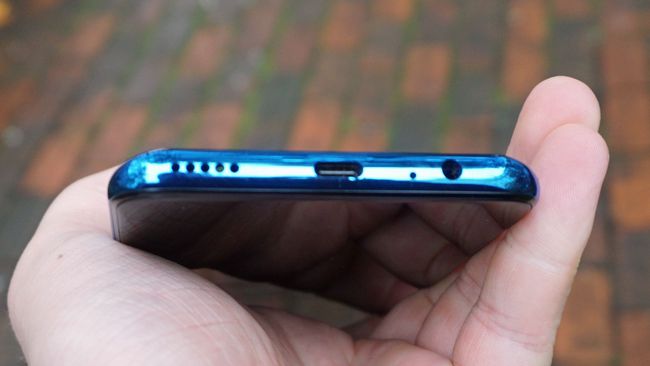
That isn’t the biggest battery drop we’ve seen in a smartphone, but it’s more than average, so clearly the device isn’t optimized for long streaming binges. Many of the Honor 9X’s competitors, which you can read about further on in this review, didn’t lose this much battery in the same test.
If there’s a downside to the large battery capacity, it’s charging speeds. There’s no fast-charging tech here like there is in some other Honor phones, and the charger that comes with the device seems to be in no rush to power up the handset.
When we charged the handset from empty to full, it took just over two hours. This isn’t a horrible timing, and people who have phones with microUSB or lightning ports might find this snappy, but current fast-charging tech can get a phone to power up in half this time.
Camera
Since Honor is a subsidiary of Huawei, we usually find devices from the company have pretty decent cameras; this isn’t the case with the Honor 9X though, as pictures we took with it felt decidedly ‘fine’ instead of the ‘great’ we’d expect from the company. Sure, the camera is a step up in terms of resolution from the Honor 8X, but there aren’t any huge new features.
The main rear camera is a 48MP snapper, which is joined by an 8MP sensor with an ultra-wide angle lens, and a 2MP depth assist camera for improved portrait shots.
Let’s start with the main camera. Pictures taken with this generally looked good, as they were bright and detail was captured fairly well. Autofocus was pretty quick for close-up pictures, however we did find that some shots looked fairly washed-out when we took them with the main camera.
Next is the ultra-wide snapper, which we had a few problems with. Firstly, there was notable distortion around the sides of ultra-wide pictures, which made some look a little bizarre. Also, ultra-wide snaps we took looked noticeably darker than standard wide-angle pictures, even if it was the same scene. This isn’t totally a bad thing, as ultra-wide pictures actually had richer colors, but it did lead to inconsistent snaps when varying between the lenses – and if you shoot a video which uses both, you’re going to find the colors changing constantly.


Finally there’s the 2MP depth assist camera, which slightly helps for portrait shots for creating accurate background blur. However, we remain unconvinced on the benefits of a portrait-centric sensor when there’s no telephoto lens as a result, which is slightly more common on smartphone cameras.
Without a telephoto or periscope lens for zoomed pictures, there’s no optical zoom, and a rather limited 6x digital zoom. Pictures taken at a zoom didn’t look awful, but since it’s quite a low max zoom, we found it easier just to take standard pictures and crop them ourselves.
There are some extra features and modes at play in the Honor 9X camera to enhance pictures you take – it’s not as wide a range of features as Huawei has been known to use, but it’s something.
The first is an ‘improved’ night mode, which takes low-light pictures with more detail and color. It works well, however pictures taken in this mode looked almost identical to pictures taken with the main camera when AI scene optimization is on, as that applies a similar effect without you having to hold your phone still for ages. In short, the night mode felt a little redundant thanks to software advancements.


This AI photography mode is a treat, and it’s the saving grace of the Honor 9X’s camera. It optimizes pictures depending on the context, so if you’re taking a close or long-range picture, a snap of greenery or food, or a portrait of your pet, it knows, and can tweak various settings to take the best picture.
There are limited video recording options in the Honor 9X – you’ve got 720p / 30fps, 1080p / 30fps and 1080p / 60fps if you want to record in 16:9 aspect ratio, but if you want to record a 19.5:9 video you’re limited to 1080p / 30fps. There’s no 4K here, despite a comment in the options menu that says you can’t use the wide-angle lens in 4K.
It’s inadvisable to use the wide-angle lens for any video recording though, as due to the aforementioned color disparity, a video looks startlingly different when you switch between the lenses.

The front-facing camera is 16MP, and it’s not the best front-facing camera we’ve ever seen, but it will do. The main problem is that the pictures look a little too pale, with washed-out colors and a brightness that’s a little too high. Saying that, most people don’t use enough phone cameras to really notice this difference.
There are a range of effects available on the front-facing camera that we’ve seen before, but they’re still fun to play around with here. Stage Lighting isolates you and gives you a dark black background, perfect for artistic-looking headshots, and some of the modes manipulate lights in the background to create patterns. They are, of course, rather situational, but if you find yourself with distant lights in the background, you can take great pictures.
Camera samples





Interface and reliability
The Honor 9X runs Android 9, which isn’t the latest version of Google’s operating system, but most smartphones aren’t eligible to upgrade yet. Laid over the top of this is EMUI, Huawei’s own user interface, which has its good and bad points.
Colors are bold in EMUI, with icons that are all different vibrant colors (some would call them garish). The default background is a rather subtle blue, as opposed to the Huawei P30 (which also has EMUI) which had a bright wallpaper. As a result the phone doesn’t seem too lurid to look at, but it’s still a far shout from ‘restrained’.
Many Chinese smartphone manufacturers pack their UIs full of bloatware, and while some of them like Oppo have quickly learnt that this doesn’t go down well with Western phone users, Huawei is not one of those brands, so the Honor 9X comes with loads of preloaded apps which feel rather useless. There’s Huawei Health, which is only really useful if you have a Huawei or Honor wearable (although its step counter is okay), HiCare, which is basically just a support app for the phone, and Honor Store, which lets you buy Honor products, including phones. These are all useful apps for some people, but they don’t feel vital enough to come pre-installed on the phone.

Generally the Honor 9X is fine to use, and we didn’t have any trouble making or receiving calls, connecting to the internet, or accessing our mobile data. The GPS did feel a little inaccurate, and Bluetooth dropped occasionally, but neither of these problems were frequent enough for us to consider them a major issue with the device.
Movies, music and gaming
The viewing experience on a smartphone is always linked to the screen quality, and because of the Honor 9X’s LCD screen, movies and TV shows look simply okay. The high resolution is apparent, with picture quality looking pretty good, but the colors are a little flatter than we’d like. Not all smartphones at this price have as big a screen as the 9X, though, so you could certainly do a lot worse if you like to watch content on the go.
The Honor 9X has a mono down-firing speaker, which is easy to cover up with your hand if you’re holding the handset for gaming or watching content. Saying that, audio quality isn’t great, with notable distortion at higher volumes and not too much bass to speak of, so you may want to stick with headphones.
There is a 3.5mm headphone jack on the Honor 9X, so if you’re a fan of wired headphones, this is one of the few handsets that still has the port. While many companies have been dropping 3.5mm jacks, Huawei still has a decent number of phones that still use it, such as this device.
If you’re a big fan of smartphone gaming, you’ll find the Honor 9X okay but not great, and this is probably down to the mid-range chipset (which we’ll get into in the next section).
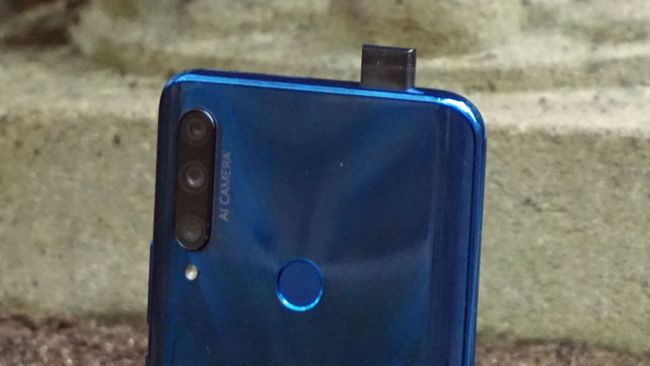
The Honor 9X ran all the high-end games we tested, like Call of Duty Mobile or PUBG, but it didn’t always provide quite as good an experience as other devices. For example, PUBG defaulted the graphics to the medium setting, which is pretty rare when most mid-rangers easily reach the high mark. When playing online matches of Call of Duty Mobile, we experienced frequent frame rate problems.
Less demanding games were fine to play, with the likes of Crazy Taxi and Alto’s Odyssey playing just as well as they would on any other phone, so if you don’t plan on playing the most intensive games, the Honor 9X will be fine.
Performance and benchmarks
The Honor 9X has a Kirin 710F chipset – that’s a decent mid-ranger, a boosted version of the Kirin 710 that we’ve seen in a few phones now like the Honor 8X, Honor 20 Lite and Huawei P30 Lite. That means its performance isn’t wildly different to last year’s Honor X device, a point that’s proven by benchmark scores.
When we put the phone through a benchmark test on Geekbench 4, it returned a multi-core score of 5,246, which is actually lower than the 5,552 we got for the Honor 8X. On Geekbench 5, we got a score of 1,264, and while Geekbench 5 is so new that we haven’t tested many phones on it, that’s still the lowest score we’ve seen.
However, its Geekbench 4 score is far from the lowest we’ve seen in 2019, and in general the phone doesn’t feel too slow to use, as scrolling through the camera app, which can usually be a telling indicator of performance speeds, feels pretty fast.
Verdict
The Honor 9X is a decent phone, for its price tag. That’s quite the condition, it’s true, and you can easily get a better smartphone if you’re willing to put a little bit more money in, but if you don’t want to break the bank, you can do a lot worse that this phone.
It has its bases covered in all the ways you’re going to care about – there’s a 3.5mm headphone jack, decent battery life, and enough trappings of a modern phone to ensure it’ll last you a long time.
Saying that, there are a few handsets at this price tag that do manage to push the boat out, and they may be more worth your time and money than the Honor 9X. These handsets have better screens, cameras, or processors than the 9X, all without breaking the bank.

Who is it for?
People who are looking for a solid all-rounder device, but don’t want to pay too much for mid-range specs and features.
Should I buy it?
If you’re looking for a decent phone, that isn’t exciting or novel but will serve you just fine, then the Honor 9X will be worth your money. You won’t be disappointed by it either, as it’s future-proof enough to see you through a good few years without feeling out-dated, with its reliable design and robust form.
First reviewed October 2019
